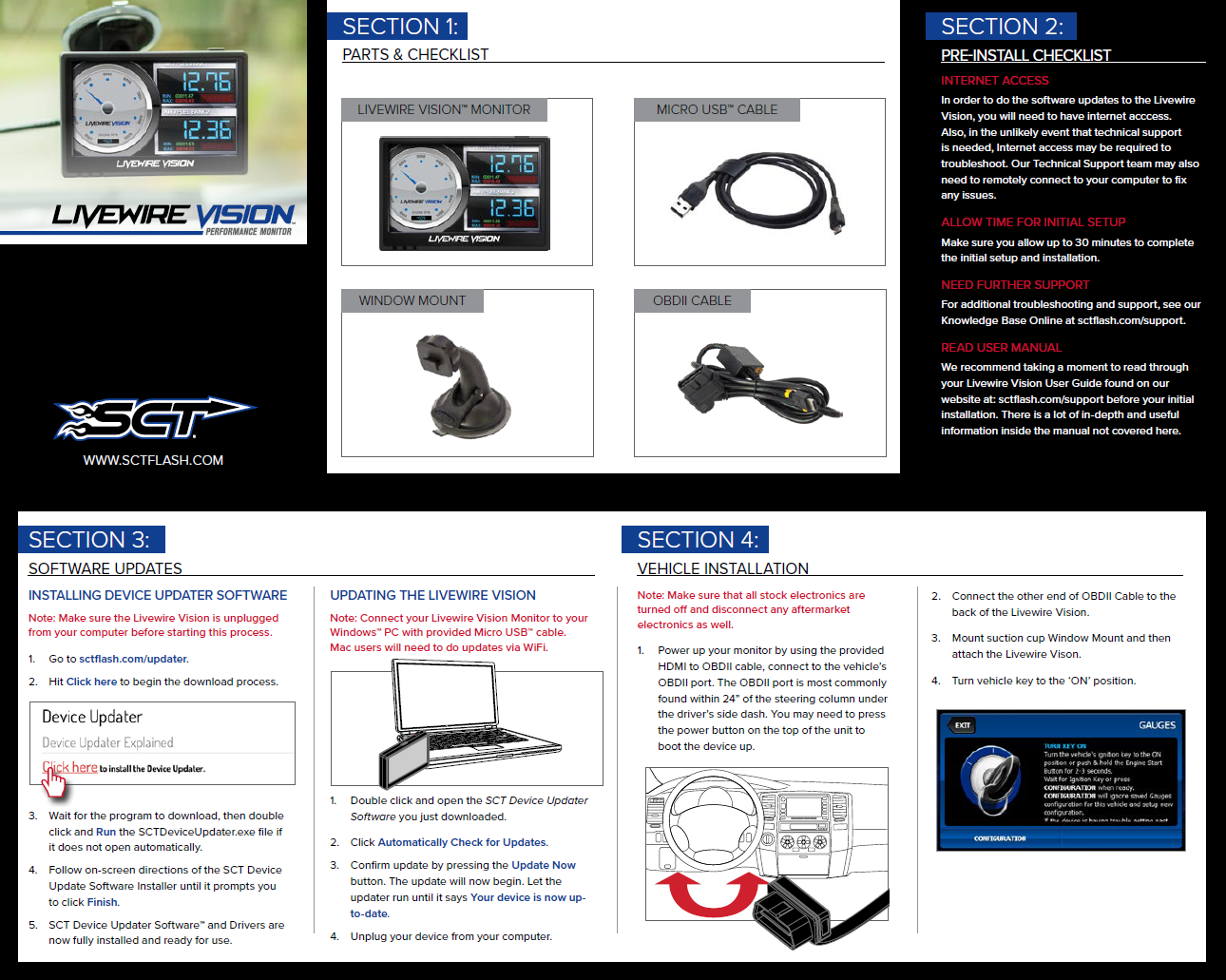

- #No part number found sct device updater software#
- #No part number found sct device updater download#
This detection identifies the use of Invisi-Shell, a method of running PowerShell without any of the normal security features that come with PowerShell (ScriptBlock logging, Module logging, Transcription, AMSI).

If this activity is not benign or expected, consider rebuilding the host from a known, good source and having the user change their password. Examine the parent process that spawned the command, and anything else that process may have spawned. RecommendationĪcquire the INF file that is being installed and analyze for suspicious contents in the DefaultInstall_SingleUser and UnRegisterOCX sections. Under this section, the OCX unregister directive, UnRegisterOCXs, calls the UnRegisterOCXSection to perform the ‘malicious’ action of invoking scrobj.dll to fetch and run the SCT script file.

Within the source INF file used for remote SCT execution, ‘cmstp.exe’ calls the INF section named ‘DefaultInstall_SingleUser’. For reference, basic usage for ‘cmstp.exe’ is as follows: Malicious actors can use INF files to fetch SCT files from web resources and execute COM scripts/scriptlets using ‘cmstp.exe’, which is a utility that is able to bypass UAC and AppLocker default policies. This detection identifies the use of CMSTP to load an INF file.
#No part number found sct device updater software#
Other methods to execute malicious code in an Office document include using Dynamic Data Exchange objects or exploiting software vulnerabilities.
#No part number found sct device updater download#
Macros run commands using built-in Windows utilities, such as PowerShell, to download malware and compromise the system. These malicious documents leverage macros, which are small Visual Basic for Applications (VBA) scripts embedded inside of Microsoft Office documents, such as PowerPoint, Excel and Word. This detection identifies suspicious processes spawned by Microsoft Office applications, which could indicate that a malicious actor is using a malicious document. Review the URL passed to 'mshta.exe' to determine if it is from a trusted source., Review the firewall and web proxy logs from this endpoint to identify any malware retrieval from remote systems. Review the firewall and web proxy logs from this endpoint to identify any malware retrieval from remote systems. A malicious actor could pass commands to PowerShell obfuscated or encoded using compression tools, such as Base64 or gzip. Review the command passed to PowerShell to determine if it is malicious activity. Review the URL passed to ‘mshta.exe’ to identify if it is from a trusted source., Review the firewall and web proxy logs from this endpoint to identify any malware retrieval from remote systems. Macros run commands using built-in Windows utilities to download malware and compromise the system. These malicious documents leverage macros, which are small Visual Basic for Applications (VBA) scripts embedded inside of Microsoft Office documents, such as Word, PowerPoint, and Excel. Eliminate Debt, Stop Foreclosure, Predatory Lending, False Arrest.This detection identifies suspicious processes spawned by Microsoft Office applications, which could indicate that a malicious actor is using a malicious document.


 0 kommentar(er)
0 kommentar(er)
